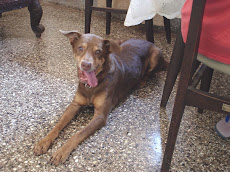Canacona shows us the writing on the wall for Goa. For a few years now, people of this beleaguered taluka have been warning anyone who would listen, that the three major rivers of Canacona were a disaster waiting to happen. They said that the ecological imbalances in the region had led to the narrowing of the three rivers at Saleri, Galgibaga and Talpona. They asked the authorities to listen. No one did.
Like most problems facing Goa today, which anger one half of the population and have the other half on the defensive, the cause is tourism or mining, or both. In the lovely, sleepy taluka of Canacona with its forested hills, gentle rivers and beautiful beaches, the horror that unfolded with a killer flood of two-and-a-half metres height was as unexpected as the sight of a dead buffalo hanging upright with its forelegs through the middle branches of a tree.
With the rivers narrowed and silted up, the water made nonsense of the rivers. The flash flood broke banks, bundhs and nullahs taking houses, plantations, animals and people along with it. Sheer luck, presence of mind and the bravery of the Canconkars themselves who risked their own lives to save others, kept the human death toll at two. Animals were not so lucky.
Could it have been avoided? Locals say that age-old farming practices have been abandoned without a thought to the gradual death of the rivers. Traditional farmers used to remove the silt which accumulated during the monsoons from the riverbanks and used it in their orchards. Now they use artificial fertilizer and let the silt accumulate. Weeds grow on the silt and narrow the width of the river. Worse, with tourism, farming has been abandoned by most families. Instead land has been sold and developed. Khazan lands have been filled up and river banks now have constructions instead of plantations.
I have a special fondness for Canacona because I used to travel with a team of my colleagues to get stories from there. And what stories! How an entire village was sold decades ago to a hotel owner in North Goa and how they are still fighting a losing battle in court. We met Querobina who was 102 years young with sparse salt ‘n pepper hair, and all her teeth intact. She told us wryly that she drank beer, ate pork, and smoked cheroots that had her youngest son in his late 60s gagging. She died two years later.
We met a Dhangar freedom fighter who was educated in jail by another Brahmin freedom fighter Vishwanath Lawande, who shared his cell. The Dhangar settlement was neatly laid out with cool thatched houses, goats grazing and an unending supply of tender coconuts. Our freedom fighter claimed to be older than Querobina but had no written proof of it. He also told us he shot and killed over 300 tigers. It was kill or be killed because he used to carry letters hidden in tins of nashni, from Goa’s freedom fighters over the hills through the dense jungle to a designated tree trunk in Karnataka where compatriots in Karnataka would collect the letters and bring some of their own.
As far back as 2001 locals said it was almost impossible to identify the existence of the river Saleri, as heavy weed infestation had taken over major portions of the river.
We met some wonderful people there. Canakonkars. They are different from us fast changing urban Goans of the rest of Goa. One could say the locals of Canacona are the original Goans, gentle, warm, resourceful. They have been blessed with a beautiful land with no less than three rivers. They have a rich culture steeped in centuries of tradition. Yet they have been cursed with a baffling kidney disease that attacks sometimes entire families or at least one family member.
I learned all this almost 10 years ago. I plan to go this week to Canacona, not to get stories this time but to lend a hand. I can cook, I can clean, I can sew, I can make people laugh and I can write. I can definitely help to remove stones from paddy fields. Maybe some of these qualities can come in handy. Clearing up the fields and getting them ready for planting again is going to be a long process. I wish Querobina was still around, but then again, it’s a good thing she left before she could see the horror unfold.
Saturday, October 10, 2009
Subscribe to:
Post Comments (Atom)



2 comments:
"...a dead buffalo hanging upright ... through the middle branches of a tree."
I like that image. Thanks.
hey, nice article there.
This article needs to be read by all Goans.
samir
Post a Comment